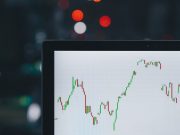The Rise of A.I. + 3 Stocks to Buy Today
In my years as a financial analyst, I've witnessed the rise and fall of many technological trends. But nothing has captivated my attention and...
The Unparalleled Importance of Natural Gas: A Deep Dive into the Future of Energy
I'm thrilled to bring you this comprehensive analysis on one of the most pivotal energy sources of our time: Natural Gas. As someone who...
The Future of Energy: Battery Metals and the Companies Leading the Charge
I’ve spent countless hours researching the future of energy, and I can tell you with utmost certainty that we’re on the brink of a...
GDP Shrank 4.8% in Q1, and It May Only Get Worse
GDP hasn’t fallen this much in 12 years.
Thanks to the coronavirus, GDP contracted at an annualized rate of 4.8%. Economists were only expecting a...
Why Oil Could Drop to Negative $100
Here we go again.
Oil prices are slipping on storage concerns.
Last checked, oil was down 26% to $12.49, and could easily slip back below zero...






